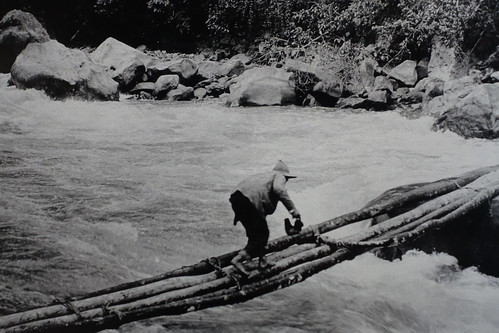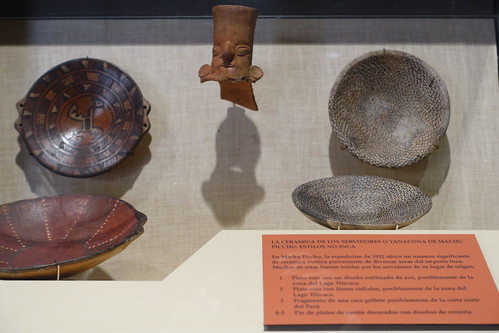As the COVID-19 pandemic continues to affect people throughout the world, it is not possible to predict when it will be safe to travel again. In the meantime, I can take time to reflect on past adventures and recall what I learned at each destination. After visiting Peru, I remain fascinated by the Incas who built Machu Picchu, and by Hiram Bingham III who brought this civilization to the attention of the western world.

Overcast skies darkened the morning sky as our train arrived in Machu Picchu. With rain jackets in hand, we followed our two tour guides, Juan Carlos Nina and Juan Oscar Medina Guiterrez, into the 16th century Inca landmark. Sporadic rain droplets fell through the gray clouds hovering over the mountain peaks. Taking legible notes in such conditions was impossible. But the damp conditions didn’t stop our non-stop picture taking or our sense of adventure as we witnessed what Hiram Bingham III uncovered at the beginning of the 20th century.

Sandy and Ira
It’s hard to imagine early 20th-century travel conditions when few foreigners set foot in the cloud forest near the Urubamba River. Bingham organized the Yale Peruvian Scientific Expedition so that he could search for the Lost City of the Incas known as Vilcabamba. His ambitious adventure was financed by his family, Yale classmates, and American companies, while a military escort protected his safety. Government letters of introduction helped ensure passage through the small villages in this remote area. While Bingham eventually introduced Machu Picchu to the western world, he never did find the Lost City.
Machu Picchu, a UNESCO Cultural and Natural World Heritage Site, became one of the Seven New Wonders of the Modern World in 2007. During our guided half-day tour, our fascination with Incan culture peaked and became further enriched when we visited the Machu Picchu Museum in Cusco.

Inside structure
Machu Picchu Tour
All of our photos capture the magnificent shades of green covering the terraced landscape surrounded by jagged mountain peaks. Down in the steep valley, a river carved its way through the mountainous terrain. This lush setting helped accentuate the remnants of the neutral-colored stone buildings we visited, as well as the ones we saw from a distance.

Some of the larger structures had been used for religious purposes, while other locations were determined to be social gatherings places. In these open plazas, the community would have feasted at banquets serving llama meat, venison, fruit, and corn beer.
The Temple of the Sun has a window where the sun’s rays can project onto a carved rock on June 21, the Southern Hemisphere’s Winter Solstice. This projection notified the people of the shortest day of the year, corresponding with the beginning of Inti Raymi, the Sun Festival. We also came upon a massive stone structure once used as a solar clock. The Incas’ reliance on astronomy reminds me of the Ancestral Pueblos, who tracked the movements of the sun, moon, stars, and planets at the site now known as Chimney Rock National Monument.
Our guides also pointed out single-story stone homes with double-jammed doorways. These passageways, protected with bar-holds, offer an internal locking system. We could only imagine the thatched roofs that deteriorated over time.

Terraced farming
Tiered agricultural planting areas, now covered with non-indigenous weeds, still hold vestiges of corn, potatoes, beans, coca, quinoa, zucchini, small tomatoes, and medicinal plants. These well-constructed terraces, made with sturdy retaining walls, prevented landslides and were the source of bountiful harvests sustaining the community. Stone-lined canals once carried natural spring water from almost half a mile away to more than a dozen carved stone fountains.

Guiterrez examining stones
Without written records, scientists are relying on bits and pieces of archeological findings to understand this civilization. They are still trying to determine why the city was abandoned and why it was hidden for so long. Archeologists and modern architects are astounded by the Inca’s ingenuity. Remarkably, they were able to erect sturdy buildings made of massive stone slabs, that have stood up to the yearly assault of a tropical environment, without the use of modern machinery.

Entrance into buildings
Machu Picchu Museum in Cusco
Surprisingly, we only encountered a couple of other visitors as we walked through this informative museum housing artifacts from Machu Picchu and photos from Bingham’s expeditions. When Bingham returned to Machu Picchu in 1912, he was accompanied by topographers, a medical doctor, a geologist, an osteologist, an archaeologist, and several Yale students. Minimally supervised onsite excavations performed by local farmers recovered artifacts illustrating daily life practices.

Hiram Bingham in 1912
Modern scientists are critical of the lack of direction used during these excavations, as well as the primitive methods used to document the group’s findings. Despite these limitations, the 1912 Expedition was able to recover personal possessions from burial sites shedding light on daily life. These discoveries were possible because the Incas followed a tradition of being buried with their belongings.

Museum Artifacts from 1912 Expedition
Expedition members Albert Bumstead, H.L. Tucker, P.B. Lanius, and Robert Stephenson surveyed the area. They created a map that is still considered the most accurate map of the site.

1912 Map
A series of photos taken during the expedition provided an understanding of what Bingham encountered. One picture shows a temporary bridge constructed across the tumultuous Vilcanota River. Other images show how the surrounding jungle engulfed all of the structures, and a hand painted picture shows Bingham talking with members of the local community.

Handpainted image of Hiram Bingham interviewing local governor and residents

Wooden branch bridge across the Vilcanota River
Videos with English subtitles include information about Bingham and his expeditions, as well as the Incas’ daily life. Tidbits of information reinforced what we had learned while touring Machu Picchu. Once again, we realized the importance of Machu Picchu’s strategic location. Treacherous cliffs border three out of four sides of the settlement, and a parapet structure defended the entrance.

Machu Picchu artifacts
Another informative display described the use of chica, a fermented corn product, a primary ingredient of Inca celebrations. Inca women mixed sprouted maize kernels and chewed maize mash to produce fermented products that were strained and stored in narrow-necked containers. Corn beer and other maize products were used during religious ceremonies where humans shared their world with the supernatural gods controlling their destiny. These ceremonies tracked the movements of the sun, moon, and stars.
The Incas were also known for the textiles made from alpaca wool and cotton. The style and symbols on the garments corresponded to social status and political ranking.
At another historical site, Guiterrez had demonstrated how a quipu, a knotted string apparatus made of cotton or camelid fibers, was used by the Incas to record numerical data.

Museum quipo in display case
Our half-day tour of this archeological site, coupled with our visit to the museum, allowed us to go back in time to when the Incas ruled a population of approximately 12 million people in the western part of South America. Centuries later, we sampled a small portion of how history comes alive at a museum in Cusco and at Machu Picchu.

Sandy Bornstein, the History Comes Alive Through Travel Editor for Wandering Educators, has visited more than 40 countries and lived as an international teacher in Bangalore, India. Sandy’s award-winning book, May This Be the Best Year of Your Life, is a resource for people contemplating an expat lifestyle and living outside their comfort zone. Sandy writes about Jewish culture and history, historical sites, family, intergenerational, and active midlife adventures highlighting land and water experiences.
All photos courtesy and copyright Sandy Bornstein
